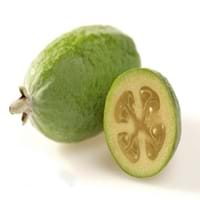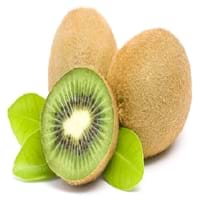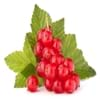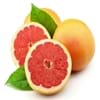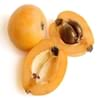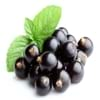Health Benefits
Anti depressant, Cancer prevention, Reduces nervous tension, Treatment of alzheimer's disease, Treatment of Lung disease
Asthma treatment, Heart care, Prevents constipation, Treatment of skin Diseases
General Benefits
Digestive aid, Helps in weight loss, Improves blood circulation, Strengthens bones, Treatment of common cold
Boosts immune system, Controls blood pressure, Eye care, Helps in weight loss
Skin Benefits
Brightens and lightens complexion, Skin rejuvenation
Brightens and lightens complexion, Heals sunburn, Reduces wrinkles, Skin rejuvenation, Treatment of acne, Treatment of dark spots, Treatment of skin diseases
Hair Benefits
Promotes longer and healthier hair, Protects hair
Prevents hair loss, Promotes longer and healthier hair, Treatment of dandruff
Allergy Symptoms
NA
Abdominal pains, Anaphylaxis, Breathing difficulty, Itching in tongue and other parts of mouth, Itching sensation in throat, Swelling of mouth, tongue or lips, Vomiting
Side Effects
Allergic reaction
Allergic reaction, Diarrhoea, Skin rash, Possibly unsafe during pregnancy
Best Time to Eat
As a snack in the late afternoon, Don't consume at night and before bed, Eat the fresh ones, avoid mixing with any other foods, don't eat after meal., Morning time (before lunch)
Any time except an hour after meal, Don't consume at night and before bed
Vitamin A (Retinol)
Not Available
Vitamin B5 (Pantothenic Acid)
Vitamin C (Ascorbic Acid)
Vitamin K (Phyllochinone)
Calories in Fresh Fruit with Peel
Not Available
Calories in Fresh Fruit without Peel
Not Available
Calories in Frozen Form
Not Available
Not Available
Calories in Canned Form
Not Available
Season
Autumn, Winter
Spring, Summer, Winter
Varieties
Anatoki, Gemini, Kaiteri, Kakariki, Pounamu, Unique, Apollo, Den's Choice, Kakapo, Mammoth, Opal Star, Triumph and Wiki Tu
Zhong Hua, Jing Li, Ruan Zao, Mao Hua and Huang Yan
Texture
Succulent
Succulent
Taste
Sweet
Sour-Sweet, Tangy
Origin
Argentina, Brazil, Paraguay, Uruguay
China
Grows on
Not Available
Vines
Soil Type
Clay loam, Gravely loam, Sandy
Well-drained
Climatic Conditions
Cold, Warm
Cold, Sunny
Facts about
- Feijoa is called as "pineapple guava" in some countries.
- Feijoa tree is an ornamental plant that can also be used as hedge & windbreak.
- All parts of feijoa fruit are edible(skin is mostly discarded).
- The name Kiwi is due to the resemblance with 'Kiwi' bird.
- Animals like monkeys and deer also consume Kiwifruit.
- Originated in china, this fruit is also called as 'Chinese gooseberry.'
Top Producer
New Zealand
Italy
Other Countries
Australia, Azerbaijan, India, Japan, United States of America
Chile, France, Greece, Iran, Japan, New Zealand, Portugal, Turkey, United States of America
Top Importer
China
United States of America
Top Exporter
New Zealand
New Zealand
Botanical Name
Acca sellowiana
Actinidia deliciosa
Synonym
Feijoa sellowiana or Orthostemon sellowianus
Not Available
Subkingdom
Tracheobionta
Tracheobionta
Division
Magnoliophyta
Magnoliophyta
Class
Magnoliopsida
Magnoliopsida
Subclass
Rosidae
Dillenhidae
Family
Myrtaceae
Actinidiaceae
Species
A. sellowiana
A. deliciosa
Generic Group
Myrtle
Kiwi
Difference Between Feijoa and Green Kiwi
We might think that Feijoa and Green Kiwi are similar with respect to nutritional value and health benefits. But the nutrient content of both fruits is different. Feijoa and Green Kiwi Facts such as their taste, shape, color, and size are also distinct. The difference between Feijoa and Green Kiwi is explained here.
The amount of calories in 100 gm of fresh Feijoa and Green Kiwi with peel is Not Available and 61.00 kcal and the amount of calories without peel is 55.00 kcal and Not Available respectively. Thus, Feijoa and Green Kiwi belong to Low Calorie Fruits and Low Calorie Fruits category.These fruits might or might not differ with respect to their scientific classification. The order of Feijoa and Green Kiwi is Myrtales and Ericales respectively. Feijoa belongs to Myrtaceae family and Green Kiwi belongs to Actinidiaceae family. Feijoa belongs to Acca genus of A. sellowiana species and Green Kiwi belongs to Actinidia genus of A. deliciosa species. Beings plants, both fruits belong to Plantae Kingdom.
